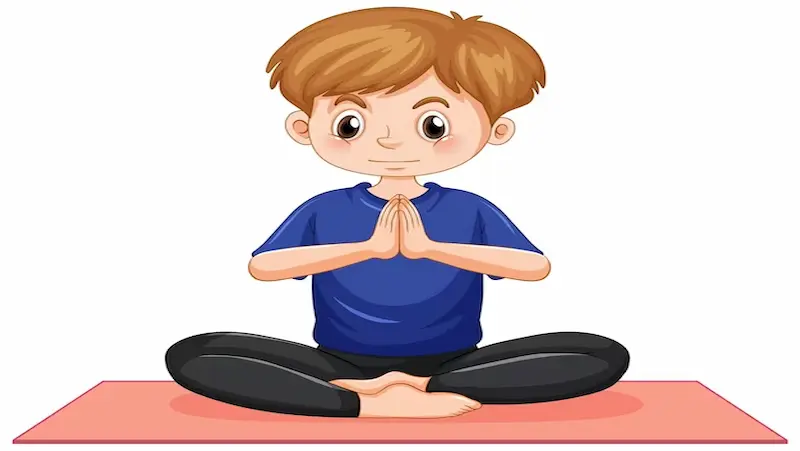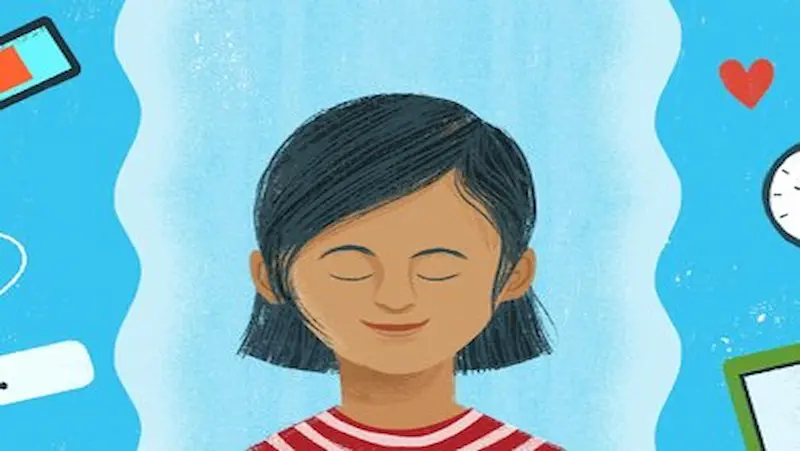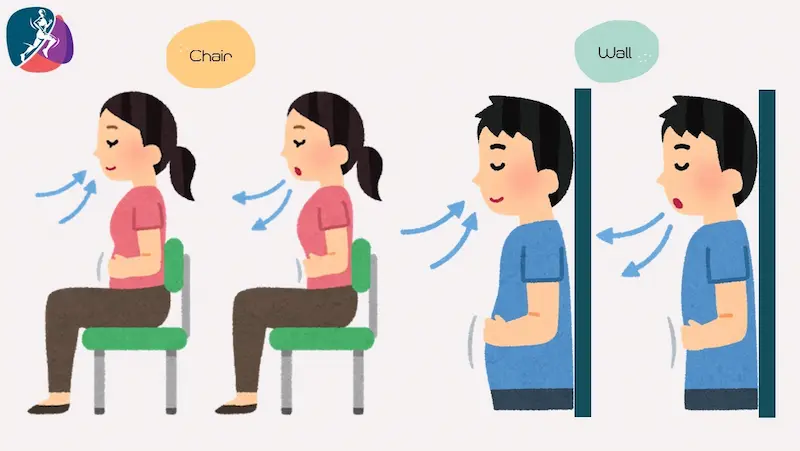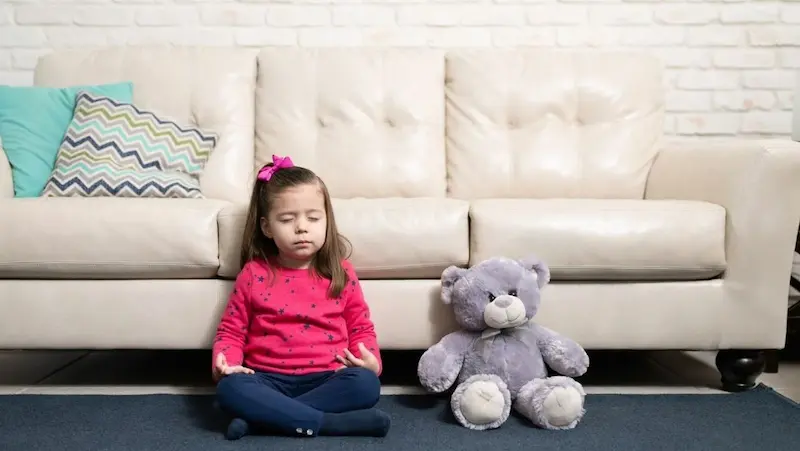How can mindfulness benefit kids in today’s fast-paced world? The Power of Mindfulness Breathing for Kids is a transformative practice that nurtures their mental well-being and emotional resilience.
By focusing on the present moment and their breath, children develop a heightened sense of self-awareness and learn to manage stress and anxiety. This engaging guide introduces simple yet powerful techniques tailored specifically for kids, helping them cultivate calmness, concentration, and compassion.
Table of contents
- Introduction
- Understanding Mindfulness Breathing
- Age-Appropriate Techniques
- Creating a Mindful Environment
- Benefits for Children
- Introducing Mindfulness Breathing to Kids
- Parent’s Role and Support
- Mindfulness Breathing Resources for Kids
- Integrating Mindfulness into Everyday Life
- Conclusion
- Frequently Asked Questions
Introduction
Introducing mindfulness practices at a young age has numerous benefits for children’s well-being. Mindfulness breathing helps children develop self-regulation skills, enhancing their ability to manage emotions, reduce stress, and improve focus and attention span.
It promotes a positive mindset, empathy, and compassion, fostering healthier relationships with peers and family members. Mindfulness also enhances cognitive abilities, memory, and problem-solving skills.
By starting early, children can cultivate lifelong habits of self-care and emotional resilience, setting a strong foundation for their overall well-being and success in the future. Empower your child with the lifelong gift of mindfulness breathing for a happier and healthier life.

Understanding Mindfulness Breathing
Mindfulness breathing is a practice that involves focusing one’s attention on the breath, bringing awareness to the present moment. It helps children develop self-awareness by directing their attention to their breath, thoughts, and emotions without judgment. Through this practice, children learn to recognize their internal experiences and gain a better understanding of their own thoughts and feelings.
Mindfulness breathing also enhances children’s focus and concentration. By bringing their attention to the breath, children learn to anchor their awareness in the present moment, reducing distractions and improving their ability to stay focused on tasks or activities.
Scientific research supports the positive effects of mindfulness breathing on children. Studies have shown that mindfulness practices can reduce stress and anxiety, improve attention and self-regulation, and enhance overall emotional well-being in children. Research also suggests that regular mindfulness practice can lead to positive changes in the brain, improving cognitive functioning and resilience.
By incorporating mindfulness breathing into their lives, children can develop valuable skills that promote self-awareness, focus, and emotional well-being, setting them on a path toward a healthier and more fulfilling life.

Age-Appropriate Techniques
Here are some Age-Appropriate mindfulness breathing Techniques for kids –
For young children (ages 3-6), simple mindfulness breathing exercises can be engaging and effective. Here are a few examples:
1. Bunny Breath: Encourage the child to imagine they are a bunny. Inhale deeply through the nose, and then exhale with short, quick breaths through the nose, mimicking bunny sniffing.
2. Flower Breath: Have the child imagine they are holding a flower. Inhale slowly and deeply through the nose, imagining they are smelling the sweet fragrance. Exhale gently through the mouth, as if blowing out a candle.
3. Teddy Bear Belly Breaths: Ask the child to lie down and place a small stuffed animal on their belly. Inhale deeply, watching the teddy bear rise as their belly expands. Exhale slowly, allowing the teddy bear to lower as their belly contracts.
For older children (ages 7-12), engaging activities can help teach mindfulness breathing:
1. Mindful Counting: Have the child sit comfortably and focus on their breath. Instruct them to count their breaths silently, from one to ten, with each inhale and exhale. If their mind wanders, gently guide them back to the breath and counting.
2. Bubble Breaths: Provide the child with a bottle of bubbles. Instruct them to take slow, deep breaths, and then blow out the breath gently through a bubble wand, observing the bubble float away as they exhale.
3. Mindful Listening: Lead the child in a guided activity where they close their eyes and focus on listening to various sounds in their environment. Encourage them to pay attention to the sounds without judgment or interpretation, simply observing them.
When adjusting techniques based on the child’s developmental stage, it’s important to consider their attention span, ability to follow instructions, and their emotional and cognitive development.
Younger children may benefit from shorter, more interactive exercises, while older children can engage in more guided mindfulness practices. Adapting techniques to suit the child’s age and abilities ensures that the mindfulness breathing exercises are accessible and beneficial to their unique needs. learn about finance for kids also.

Creating a Mindful Environment
Setting up a calm and peaceful space for mindfulness practice can create a conducive environment for children to engage in mindfulness breathing. Here are some tips:
1. Find a quiet space: Choose a quiet area in your home where your child can practice mindfulness without distractions. It could be a designated corner, a cozy nook, or even their bedroom.
2. Create a soothing atmosphere: Use soft lighting, comfortable cushions or mats, and calming decor to set a peaceful ambiance. Consider adding elements like plants, gentle music, or essential oil diffusers to enhance the atmosphere.
3. Minimize distractions: Remove or minimize any potential distractions such as toys, electronics, or loud noises from the space. This helps create a focused and serene environment.
Incorporating mindfulness breathing into daily routines can help make it a natural part of your child’s day. Here are some suggestions:
1. Morning or bedtime routine: Introduce a short mindfulness breathing exercise as part of your child’s morning or bedtime routine. It can help them start or end their day with a sense of calm and focus.
2. Mealtime mindfulness: Encourage your child to take a few mindful breaths before starting a meal. This brings their attention to the present moment, enhances gratitude, and promotes mindful eating.
3. Transition moments: Use moments of transition, such as arriving home from school or starting homework, as opportunities for a brief mindfulness breathing break. It can help your child reset their focus and regulate their emotions.
To encourage mindful breathing during challenging situations, try these strategies:
1. Be a role model: Demonstrate mindful breathing yourself during challenging moments. Children learn by observing, so your own calm and focused response can inspire them to do the same.
2. Teach the “Take 5” technique: Encourage your child to take five slow, deep breaths when they encounter a challenging situation. Remind them that this practice can help them feel more centered and make better choices.
3. Use visual cues: Introduce visual reminders like a small poster or a bracelet to prompt your child to pause and take mindful breaths when they encounter stress or difficult emotions.
By incorporating mindfulness breathing into daily routines and providing guidance during challenging situations, you can support your child in developing the habit of using mindful breathing as a tool for self-regulation, emotional well-being, and resilience.

Benefits for Children
Mindfulness breathing offers numerous benefits for children, including:
1. Enhancing emotional regulation: Mindfulness breathing helps children develop greater awareness of their emotions and provides them with a tool to regulate their emotional responses. By taking deep breaths and focusing on the present moment, children can calm themselves during moments of frustration, anger, or anxiety.
2. Developing self-control: Mindfulness breathing cultivates self-control by teaching children to pause and respond consciously rather than reacting impulsively. It strengthens their ability to choose their actions, make thoughtful decisions, and manage impulses effectively.
3. Improved focus and attention: Regular practice of mindfulness breathing enhances children’s ability to sustain attention and concentrate on tasks. It strengthens their “attention muscle” and reduces distractions, leading to improved focus and academic performance.
4. Academic performance: Mindfulness breathing has been associated with improved academic performance. By reducing stress and enhancing focus, it supports children in staying engaged, absorbing information more effectively, and performing better in their studies.
5. Stress reduction and anxiety management: Mindfulness breathing serves as a powerful tool for stress reduction and anxiety management in children. It helps them develop resilience by providing a way to calm their minds and bodies, reducing the negative effects of stress and anxiety on their overall well-being.
6. Enhancing self-awareness: Mindfulness breathing increases self-awareness in children, helping them understand their thoughts, emotions, and physical sensations more fully. This self-awareness allows them to develop a deeper understanding of themselves, their needs, and their relationships with others.
7. Promoting overall well-being: Mindfulness breathing supports children’s overall well-being by fostering a sense of calm, inner peace, and contentment. It promotes a positive mindset, self-compassion, and empathy, leading to improved mental, emotional, and social health.
Maintaining kids’ health is crucial for their energy, learning, and overall quality of life as they grow.
By incorporating mindfulness breathing into their lives, children gain valuable tools for emotional regulation, self-control, focus, and stress management. These benefits contribute to their overall well-being, academic success, and ability to navigate the challenges of life with resilience and balance.

Introducing Mindfulness Breathing to Kids
When introducing mindfulness breathing to children who may be resistant or unfamiliar with the concept, it’s important to make it fun, engaging, and relatable to their age. Here are some strategies:
1. Use games, stories, and visuals: Make mindfulness breathing interactive and enjoyable by incorporating games or activities that involve deep breathing. For example, you can play a “Breathing Buddies” game where children place a stuffed animal on their belly and see how it rises and falls with each breath. Use storybooks or videos that depict characters practicing mindfulness breathing to capture their interest and imagination.
2. Incorporate creativity: Allow children to express their creativity by drawing or coloring their breath, creating a “breathing artwork” where they use different colors or patterns to represent their inhalations and exhalations. This hands-on approach can make mindfulness breathing more engaging and personal for them.
3. Connect mindfulness breathing to their interests: Relate mindfulness breathing to something your child already enjoys. For example, if they love animals, you can guide them through a “Safari Breathing” activity where they imagine breathing like different animals. This connection to their interests helps make mindfulness breathing relatable and appealing.
4. Make it a family practice: Engage the entire family in mindfulness breathing sessions. Children often feel more comfortable and motivated when they see their parents or siblings participating. Create a routine where everyone comes together to practice mindfulness breathing, making it a shared and enjoyable experience.
Engage your child’s senses and awareness with these delightful mindfulness games for kids From sensory explorations to breathing exercises, these activities are designed to promote relaxation, focus, and emotional well-being
When explaining the purpose and benefits of mindfulness breathing to children, keep it age-appropriate and understandable. Consider the following approaches:
1. Use simple language: Use age-appropriate language to explain that mindfulness breathing is a way to help their minds and bodies feel calm and relaxed. Avoid complex terms and concepts that may confuse them.
2. Focus on practical benefits: Highlight how mindfulness breathing can help them when they feel upset, angry, or stressed. Explain that it can help them feel better and make better choices by calming their minds and bodies.
3. Relate it to their experiences: Draw connections between mindfulness breathing and everyday situations they can relate to. For example, explain that just like taking a break or resting when they feel tired, mindfulness breathing is a way to give their minds a break and recharge.
4. Share examples: Share stories or examples of how mindfulness breathing has helped other children in managing their emotions, focus better in school, or feeling happier and more peaceful.
By making mindfulness breathing fun, relatable, and understandable, you can pique children’s curiosity and interest while helping them recognize the purpose and benefits of this valuable practice.

Parent’s Role and Support
Modeling mindfulness breathing as a parent is a powerful way to introduce and reinforce the practice for children. Here are some strategies to consider:
1. Lead by example: Practice mindfulness breathing yourself and let your child observe you engaging in the practice. When children see their parents practicing mindfulness, it normalizes the behavior and encourages their participation.
2. Make it a shared experience: Encourage regular practice by setting aside dedicated time for mindfulness breathing as a family. This could be a few minutes each day or a designated time during the week. By making it a shared experience, you create a supportive environment where everyone can benefit from the practice together.
3. Create a routine: Establishing a routine around mindfulness breathing can help make it a regular part of your family’s day. For example, you can incorporate it into bedtime rituals or have a brief session before or after meals. Consistency will help reinforce the habit and make it easier for children to remember and participate.
4. Emphasize the benefits: Continuously highlight the positive effects of mindfulness breathing, both for yourself and your child. Talk about how it helps you feel calm, focused, and more present in the moment. By discussing the benefits, you help reinforce the value of the practice and motivate your child to engage in it.
When addressing challenges and answering common questions about mindfulness breathing, consider the following:
1. Addressing skepticism: Some children may be skeptical or resistant to trying mindfulness breathing. Validate their feelings and provide simple explanations about how it can help with emotions, focus, and well-being. Encourage them to give it a try and share their experiences openly.
2. Explaining distractions: Children may find it challenging to quiet their minds or stay focused during mindfulness breathing. Remind them that it’s normal to have thoughts or distractions arise and emphasize that the practice is about gently bringing the attention back to the breath whenever the mind wanders.
3. Answering questions: Be open to answering any questions your child may have about mindfulness breathing. Address their inquiries with patience and simplicity, using age-appropriate language. Answer questions about the purpose, benefits, and any concerns they may have.
4. Offering guidance and support: Provide gentle guidance during mindfulness breathing sessions, especially for younger children. Use simple prompts or cues to help them focus on their breath, and offer reassurance that it’s okay to take their time and practice at their own pace.
By modeling mindfulness breathing, encouraging regular practice, and addressing challenges or questions, you create an environment where mindfulness becomes a natural part of your family’s routine. This not only supports your child’s well-being but also strengthens the parent-child bond through shared experiences and open communication.
Unlock Personalized Parenting Support Explore Resources and Guidance Tailored to Your Unique Journey as a Parent

Mindfulness Breathing Resources for Kids
Mindfulness Breathing Resources for Kids:
1. Recommended Books
– “Sitting Still Like a Frog: Mindfulness Exercises for Kids (and Their Parents)” by Eline Snel
– “A Handful of Quiet: Happiness in Four Pebbles” by Thich Nhat Hanh
– “Breathe Like a Bear: 30 Mindful Moments for Kids to Feel Calm and Focused Anytime, Anywhere” by Kira Willey
– “Moody Cow Meditates” by Kerry Lee MacLean
– “Mindful Monkey, Happy Panda” by Lauren Alderfer
2. Apps and Online Resources
– Headspace for Kids: Provides guided meditations and mindfulness exercises for children.
– Calm Kids: Offers mindful breathing exercises, relaxation techniques, and bedtime stories for children.
– Smiling Mind: A mindfulness app with age-specific programs for children and teenagers.
– Mindful Schools: Provides resources, courses, and activities designed to introduce mindfulness to kids and educators.
– Mind Yeti: Offers guided mindfulness activities and breathing exercises for children.

3. Guided Meditation and Breathing Exercises
– GoZen! Mindfulness Meditations for Kids: Offers a collection of guided meditations designed specifically for children, addressing various emotions and situations.
– Cosmic Kids Yoga: Provides yoga and mindfulness videos with storytelling elements to engage children in breathing exercises and relaxation techniques.
– Insight Timer: Offers a wide range of guided meditations suitable for children, including breathing exercises and mindfulness practices.
4. Additional Tools and Activities
– Breathing Balls: These visual aids help children focus on their breath by following the ball’s movements as they inhale and exhale.
– Mindfulness Coloring Books: Engage children in mindful coloring activities, combining creativity with relaxation and focus.
– Mindfulness Journals for Kids: Provide guided prompts and activities to encourage reflection, gratitude, and self-awareness.
– Mindful Breathing Games: Incorporate playful activities such as blowing bubbles, using pinwheels, or imagining their breath as different animals.
These resources can support children in learning and practicing mindfulness breathing in an engaging and accessible way. It’s important to explore different options and find resources that resonate with your child’s interests and preferences. Remember to supervise their usage of apps and online resources and engage in the practice together for a more impactful experience.

Integrating Mindfulness into Everyday Life
Integrating mindfulness into everyday life goes beyond breathing exercises. Here are some ways to extend mindfulness into daily activities:
1. Mindful Eating: Encourage children to eat mindfully by paying attention to the sensory experiences of eating. Teach them to savor the flavors, textures, and smells of their food, and to eat slowly and with awareness. Engage in mindful conversations during mealtime, fostering a connection with the present moment.
Check Out These Essential Healthy Eating Tips for Kids Setting the Stage for a Lifetime of Wellness and Vibrancy.
2. Mindful Walking: Practice mindful walking with children, where they focus their attention on each step, the sensation of their feet touching the ground, and the environment around them. Encourage them to notice the sights, sounds, and sensations they experience while walking.
3. Incorporating Mindfulness into Routines: Integrate mindfulness practices into existing family routines. For example, during morning or bedtime routines, invite children to take a few moments of mindful breathing, reflect on their intentions for the day, or express gratitude for the day’s experiences.
4. Mindful Listening and Communication: Teach children to be fully present and attentive when others are speaking. Encourage active listening, empathy, and open-mindedness. Foster an environment where everyone feels heard and respected.
5. Mindful Technology Use: Encourage children to use technology mindfully by setting boundaries and promoting awareness of their screen time. Teach them to take breaks, notice how they feel when using devices, and engage in activities that don’t involve screens.
6. Nature Mindfulness: Spend time outdoors and engage children in nature-based activities. Encourage them to notice the beauty and intricacies of nature, such as the colors of flowers, the sounds of birds, or the feeling of the breeze on their skin.
7. Gratitude Practices: Incorporate gratitude exercises into daily life. For example, encourage children to express gratitude for three things before bedtime or create a gratitude jar where they can write and collect moments of gratitude.
8. Mindful Transitions: Encourage children to practice mindfulness during transitional moments, such as when moving from one activity to another or transitioning from school to home. Invite them to take a few moments to pause, breathe, and become aware of their thoughts and emotions before moving on to the next task.
By incorporating mindfulness practices into various aspects of daily life, you can foster a mindful and present lifestyle for children and the entire family. Modeling mindfulness, providing guidance, and creating a supportive environment will help children develop lifelong skills for well-being and self-awareness.

Know more about coding websites for kids in this article.
Conclusion
In conclusion, integrating mindfulness into everyday life offers a multitude of benefits for children and the entire family. By extending mindfulness beyond breathing exercises and incorporating it into activities such as eating, walking, and communication, children can cultivate a greater sense of presence, awareness, and overall well-being.
Through the integration of mindfulness practices into family routines and activities, parents can create a supportive and nurturing environment that fosters emotional regulation, focus, and stronger connections. By fostering a mindful and present lifestyle, children develop lifelong skills for self-awareness, resilience, and navigating life’s challenges with grace.
Embracing mindfulness as a family not only enhances individual well-being but also strengthens the bonds and collective harmony within the household. Also, BrightChamps provides a comprehensive platform for learning about money for kids, offering interactive and engaging resources that teach financial literacy, budgeting, saving, and other essential money management skills.
Frequently Asked Questions
Mindfulness breathing is the practice of focusing on the breath to cultivate present-moment awareness. It benefits kids by enhancing self-regulation, improving focus, reducing stress, and fostering emotional well-being.
Mindfulness breathing helps children manage stress and anxiety by promoting relaxation, regulating emotions, and increasing self-awareness. It provides a tool to calm their minds and bodies, fostering resilience and reducing the impact of stressors.
Yes, mindfulness breathing can be adapted and taught to children of all ages, starting from early childhood through adolescence. The techniques may be adjusted based on developmental stages and individual needs.
Use fun activities and visuals, relate them to their interests, practice as a family, and keep explanations simple and age-appropriate.
Parents can encourage regular mindfulness breathing by modeling the practice, making it a shared experience, setting reminders or designated times, and emphasizing the positive effects it has on well-being and emotional regulation.
Yes, scientific research has shown the positive effects of mindfulness breathing on children, including improved attention, reduced anxiety, and enhanced emotional well-being. Numerous studies have demonstrated its benefits in various settings.
Yes, mindfulness breathing can help improve children’s focus and concentration. By training their attention to stay present on the breath, it enhances their ability to sustain attention and resist distractions.
Some fun and engaging mindfulness breathing exercises for kids include “Bunny Breathing” (inhaling deeply through the nose, exhaling with a bunny-like sniff), “Bubble Breaths” (blowing imaginary bubbles with slow exhales), and “Hot Chocolate Breathing” (pretending to cool down hot chocolate with slow, gentle breaths).
Parents can incorporate mindfulness breathing into daily routines or bedtime rituals by setting aside dedicated time, using prompts or guided exercises, and making it a shared and calming experience for the whole family.
Potential challenges or misconceptions about mindfulness breathing for kids include resistance, difficulty in maintaining focus, and the misconception that it is a quick fix for all problems. Consistency and patience are key.


 We are an army of educators and passionate learners from BrightChamps family, committed to providing free learning resources to kids, parents & students.
We are an army of educators and passionate learners from BrightChamps family, committed to providing free learning resources to kids, parents & students.













